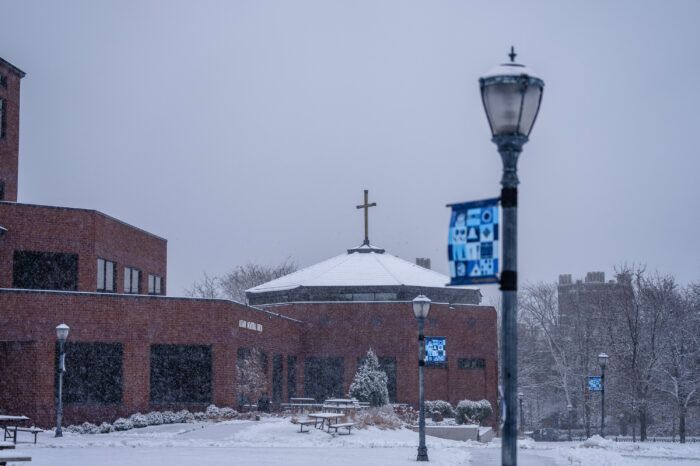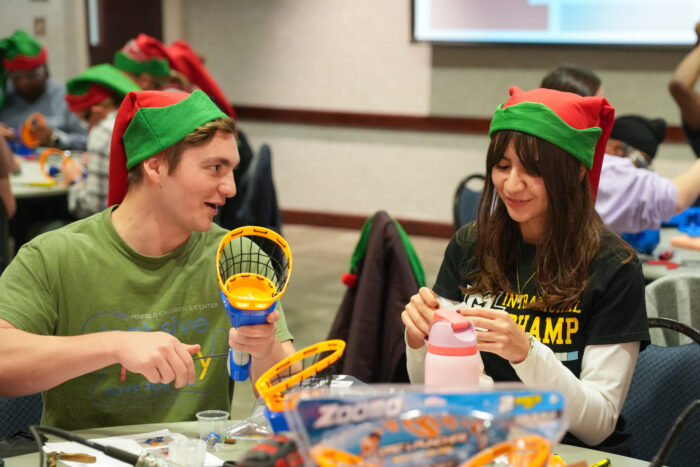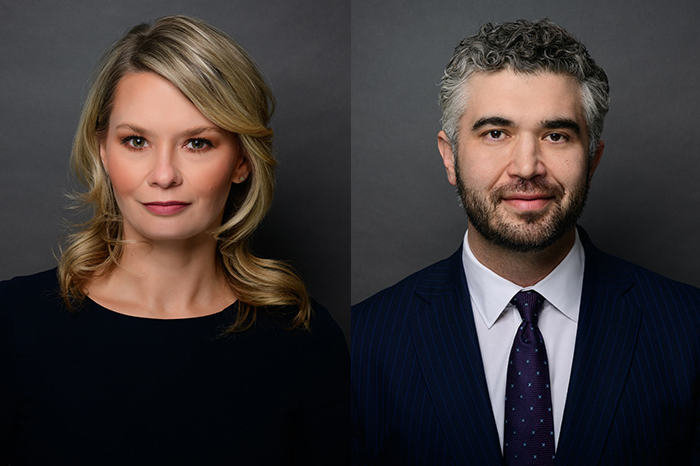The university will begin to reopen carefully over the course of the summer, while adhering to public health protocols. The goal is to have campus operational for students to return in late August.
Please note that the majority of Marquette faculty and staff should continue working from home to mitigate the spread of COVID-19.
To prepare for when the City of Milwaukee lifts its stay-at-home restrictions – as outlined in the city’s Moving Milwaukee Forward order – the Recovery Planning team has developed a phased return to campus process:
Process for phased return to campus
Each department will work directly with their dean, vice president or vice provost, and the Recovery Planning team to determine the appropriate timing for a return to campus, based on the type of work being performed.
The university is currently in Step 2 of its Recovery Plan, meaning no more than 30% of the university’s total faculty and staff should be working on campus.
The return to campus approval process is:
- All units requesting a return to campus of any size, should first read the Step 2 Return to Campus Guidelines, available on Marquette’s coronavirus website. This guide provides the framework for a phased return to campus and highlights health and safety, cleaning and disinfection, and HR protocols.
- All requests for return to campus must go through the Recovery Planning Team, led by Lora Strigens, vice president for planning and facilities management, and Jeff Kranz, assistant chief of Marquette University Police Department.
- Department chairs or directors may obtain the Step 2 Return to Campus questionnaire from their vice president, dean or vice provost, who must also sign off on the request.
- The questionnaire will then be reviewed by the Recovery Planning team.
- If approved, the requesting unit will be notified and will then work with Facilities Planning and Management to review the cleaning and sanitization needs for their space, as well as any facility related modifications and space assessments to accommodate social distancing.
- All individuals returning to campus will be required to complete a brief online Return to Campus training provided by HR.
Limited number of employees currently approved to be on campus
A limited number of faculty and staff – who have been approved through the Recovery Planning process outlined above – are currently working on campus.
This includes:
- Faculty performing critical research and scholarship that must be done on campus
- Employees working in on-campus clinics, which are seeing a limited number of patients
- Facilities Planning and Management staff who are performing cleaning and sanitization processes and continuing to care and maintain our campus environment
- Limited Information Technology Services staff, who are preparing classrooms for instruction
- MUPD
- The Executive Leadership Team, which includes the president, provost and senior vice president/chief operating officer
- Limited Residence Life staff
Recovery Plan Step 2 protocols in place for limited employees on campus
The Recovery Team has established the following Recovery Plan Step 2 protocols for the return of limited employees to campus. These protocols apply only to Step 2 of the Recovery Planning process; protocols for future phases may be different.
As the city and state provide additional guidance, the Recovery Team will incorporate that into its planning. HR will explain these protocols for each department during your specific Return to Campus training.
Below is a summary of the Step 2 protocols; please refer to the PDF for more details.
Social distancing:
- Departments’ office workspace must be arranged in a manner to maintain a social distance of 6 feet throughout.
- When meeting and office gatherings are conducted, they must respect the social distancing guidelines of 6 feet. Continued online meetings through Microsoft Teams are encouraged.
- One-on-one interactions to exchange information in the office space must respect the social distancing guidelines of 6 feet.
- Do not share private office space or office equipment when possible.
Personal protective equipment (PPE):
- When in shared or public areas of campus OR in the presence of others, it is required that the minimum of a cloth mask be worn. Employees who have been approved to return to campus should bring a cloth mask from home.
- If an employee’s role requires additional PPE, it will be provided through their department.
- The purchase of PPE outside of cloth masks should be centralized through Purchasing to avoid duplication. A requisition process for those authorized to return to campus has been set up through the School of Dentistry and is being facilitated by the Purchasing Department.
- If new PPE requirements, evaluation and/or safety assessment is needed, Dennis Daye, director of environmental health and safety, is prepared to assist those who have been authorized to return to campus.
Employee health screening:
- Employees who have been approved to work on campus but are feeling sick should not come to campus.
- Faculty and staff who have been approved to work on campus will undergo a pre-work screening process for COVID-19.
- Faculty and staff will be asked a series of health screening questions by a department designee to determine whether they are able to report to work.
- In certain circumstances, supervisors and department chairs may determine the need for faculty or staff to answer these questions before arriving to work and share the results.
- In addition to the questions, temperature screening (utilizing an infrared no touch thermometer) will be conducted by a department designee to check for anyone with a temperature of 100 degrees or higher.
- In certain circumstances, supervisors and department chairs may determine the need for faculty or staff to take their own temperature before arriving to work and share the results.
- Any faculty or staff members who have a fever, cough, shortness of breath, chest tightness, or two or more other symptoms (chills, loss of taste or smell, muscle pain, headache, sore throat) will be sent home to isolate.
- A resolution will be then be determined after consultation with the employee and department supervisor.
- Per the Americans with Disabilities Act, employers can take an employee’s temperature. Additionally, employers may ask all employees who will be physically entering the workplace if they have COVID-19, if they have symptoms associated with COVID-19 or ask if they have been tested for COVID-19.
Campus visitors:
Marquette University will no longer allow normal visitation to its workspaces from people outside of the university until further notice. Meetings with outside visitors should continue to take place virtually to ensure the protection of both employees and visitors. There are some exceptions for deliveries and other select visitors.
Cleaning and disinfecting:
- Facilities Planning and Management has thoroughly cleaned all areas that were closed as a result of working from home. Departments returning to work in Recovery Plan Step 2 can have their workspace inspected by FP&M to assure it has been properly disinfected before staff returns.
- Routine cleaning includes daily cleaning of restrooms, wiping down of surfaces, collection of trash in break rooms and rotational work (i.e. spot dusting, office trash collection and floor care).
- Marquette’s COVID-19 cleaning practices are informed by CDC best practices and include cleaning and disinfecting frequently touched surfaces.
- FP&M staff will clean and disinfect these surfaces in public areas while the spaces are occupied in addition to their routine cleaning.
- Custodians will not be wiping down individual desks, phones, keyboards, etc. This will be addressed in each department’s disinfection plan. FP&M will also provide cleaning supplies and instructions to work groups to allow employees to clean and disinfect their personal workspaces as frequently as needed.
- Departments that are returning to campus must have clear communication with FP&M around which areas they will be using while on campus. In addition to the work location, this could include – but is not limited to – entry and exit points, stairwells/elevators to access space, restroom facilities and break facilities.
- It’s important that departments clearly communicate which areas will be in use to ensure that these areas are added back into the routine cleaning schedule (in the case that they were “closed” during the remote work period).
For more information, visit the Recovery Planning page on the COVID-19 website.



